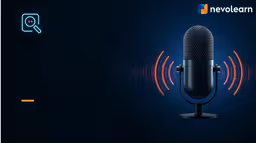Holiday Special | Enjoy 20% OFF – Celebrate the Season with Big Savings!Holiday Special | 20% OFF!
When organizations adopt Agile at the enterprise level, it comes with many challenges. The Scaled Agile Framework (SAFe) principles and values help meet these challenges. Organizations employ SAFe to ensure they can deliver their products and services to the market faster. Scaling Agile becomes crucial if the organization has to build complex solutions or handle complex projects to deliver high-quality products quickly. Over the years since its introduction, SAFe has become a popular methodology among different types of organizations because it empowers them to build scalable, customizable, and sustainable solutions in a stable environment. The Scaled Agile Framework is preferred over similar frameworks by organizations across the globe as it uses a centralized approach integrated with the organization’s business goals to deliver value.
The issues faced by the organizations while scaling Agile at the enterprise level are addressed by SAFe by converting business planning to events, constructs, artifacts, teams, and a highly integrated workflow for delivering value. The strategic themes and principles of the Scaled Agile Framework help understand the organization’s initial needs and business goals, thus providing a roadmap, a vision, and planning at each stage of Agile. In SAFe, Agile is adopted at three levels. In this article, we will talk about the SAFe Agile levels and their importance. But before we move on to discussing these levels, let us first see the four different configurations of SAFe that are necessary to know to understand how SAFe has concluded that these 3 levels of Scaled Agile framework are critical for adopting Lean-Agile smoothly.
The four configurations of SAFe
Essential SAFe:
It is the basic form of the Scaled Agile Framework. The Agile manifesto states that the work done must be minimized for a rational flow of work and the work not done must be maximized to keep things simple. Considering this, this framework was developed with two layers, namely Team level and Program level. This framework works for both large complex systems as well as smaller systems. Essential SAFe has ten elements as listed below:
- Lean-Agile principles
- Product Increment (PI) planning
- Agile Release Trains (ARTs)
- Rhythm and synchronization
- DevOps and releasability
- Planning iteration and innovation
- Inspection and adapting
- Demo at the system level
- Lean-Agile Leadership
- Architectural Runway
These ten elements of Essential SAFe implement any complex enterprise project easier.
Large solution SAFe:
The next SAFe configuration is the Large Solution SAFe. It was necessitated because extra roles, events, and artifacts were needed to coordinate multiple ARTs. Here, the simplicity of the Agile manifesto is altered. This approach moves away from simplification and scrutinizes complexities. As it deals with complexities, a new level of Large Solution was added to the two layers of Essential SAFe. This framework is used for developing large solutions or complex systems. Here several ARTs are synchronized and they coordinate with each other to deliver value. This required adding some new elements to the ten basic elements mentioned in Essential SAFe. So, the following elements were added to the 10 basic elements:
- Train in a way that multiple ARTs can coordinate with each other
- The context of the solution is described to understand the way system would interface
- The solution should be intended to ensure the development of a quality system
- Kanban is used as an approach to controlling capability flow
Portfolio SAFe:
This configuration of SAFe has been developed for large and medium enterprises with many developers. Here, managers and executives define the business strategies and organizational goals. Thus, this level aligns the organizational strategy with portfolio execution. This framework has roles, principles, and practices and starts and controls the development set for each value stream. Medium enterprises use it to govern the entire solution set technically. However, for large organizations with over 500 developers, multiple SAFe portfolios are utilized for each business line. The portfolio SAFe has certain key characteristics, which are as under:
- It has a lean budget that enables faster decision-making
- There is a clear decision-making authority
- Every value stream understands the need to fund the people and resources needed to develop the solution and deliver value to the customer.
- Portfolio Kanban makes every work visible and leads to the creation of a work in progress.
- A portfolio canvas is deployed to describe the objectives of the portfolio framework.
Full SAFe:
Considering all the advantages of the essential, large solution, and portfolio SAFe, scaled Agile developed an exhaustive framework that encompasses all the layers, including team, program, and portfolio levels.
These four configurations of SAFe, taken together, are also sometimes referred to as the four levels of the scaled Agile framework. Now that we have the basic insight into the Scaled Agile Framework, we will give a detailed description of the SAFe Agile levels and their role in Lean-Agile transformation.
The three levels of the Scaled Agile Framework
Now, we will discuss the three levels of the Scaled Agile Framework and their significance in creating a system for business that Agile powers. Let’s look at these levels.
Team Level:
This is the first and the basic level of SAFe. This is like an essential layer for the entire framework and this level aims to deliver value at the team level. At the team level, SAFe becomes the same as Scrum and Kanban and works in the same manner as these two. Here also, a repetitive method is used in which the work is split into sprints and there are artifacts and events. The responsibility at the team level lies on the product owner, business analyst, testers, Scrum Master, and user experience specialists, who perform important tasks at this level. They adopt an Agile methodology for delivering high-quality value. At this level, teams usually follow the Scrum, Kanban, or XP frameworks to deliver a better product at the end of each sprint. At this level, the product owner manages the requirement drawn out from the backlog. Some of the main attributes of the team level are as under:
- Its main objective is to provide value
- Scalability requires that continuous integration be used
- Here, quality is assured by utilizing the Test Driven Deployment (TDD) technique
- Every Agile team’s focus should be on activities, events, and procedures
- Stories are created using a backlog, these stories are then developed and assessed through iterations
- The main scheduled activities include Sprint planning, Retrospective, etc.
- The Scaled Agile Framework suggests enterprises should spend sufficient time and gain experience and expertise in Scrum at this level.
Program level:
This is the second level of SAFe and is considered the most important level of all the levels of SAFe. It works on the concept of the Agile Release Train (ART). An ART consists of 8 to 10 members who are responsible for delivering value in a particular project. Every ART has a specific objective. And to achieve this, they create products and applications in tune with the customer’s needs. At this level, the systems team collaborates closely with the product developer, business analyst, DevOps, system architects, and Release Train Engineers (RTEs). Systems and DevOps are the two main teams wherein the systems team aims to create an environment for development by building a development infrastructure. It also performs the system sprint demo and helps in test automation. The DevOps team plays a pivotal role in the deployment and automation of the deployment process. ART efforts are synchronized by using the SAFe value streams. Some of the significant features of the program level are:
- The program backlog is constantly reviewed and updated. The aim here is to keep the most important stuff at the top.
- An ART indicates the time it will take to develop a feature.
- They are responsible for evaluating and planning the method of breaking features into plain segments to enable faster value delivery.
- Based on the business value, delay cost, time, and some other factors, a Weighted Shortest Job First (WSJF) is prepared. These items that have more WSJF scores should be given priority.
- The iterative process, Program Increment (PI) with a cadence, takes place at eight to twelve-week periods. The cross-functional teams in ART set goals to mitigate risks. Every PI provides a chance to assess the history and plan for the future.
Portfolio level:
This is the Scaled Agile Framework’s third and highest level. At this level of SAFe, the objectives and goals of the entire organization are described. The focus is clear at this level and is on the organization, its purpose, priorities, and value. The portfolio level raises the bar when it comes to delivering on the enterprise’s core competencies. Here, the organization’s portfolio management and architecture are taken into consideration. So, the roles at this level include the program manager, portfolio manager, epic owner, and enterprise architecture. This is where the organization amalgamates investment funding, lean portfolio management, and organizational agility. This facilitates using the best practices for lean budgeting that the organization would use for funding the products. Here, Portfolio Management Officer (PMO) supervises Lean techniques and SAFe. Some of the major characteristics of the portfolio level are mentioned below:
- It is the highest level of SAFe
- The purpose and objectives of the organization are specified here
- Epics and business cases are defined
- Strategies are defined
- The product roadmap has been built
- The critical issues of business, like finance and change management, are dealt with at this level
- Lean concepts are used to measure the progress
Here, large projects with the highest level of strategy and structural epics are created and then moved forward to the development team
The SAFe levels are there to help the organization in an efficient and effective adoption and implementation of the Scaled Agile Framework. It is the most widely used framework and its levels help in the smooth delivery of value and achievement of organizational goals. The methodology, including SAFe levels, provides substantial value to the Agile method that can be adopted and used across the organization.
Want to Level Up Your Skills?
EXPLORE BY CATEGORY
End Of List
No Blogs available Agile




